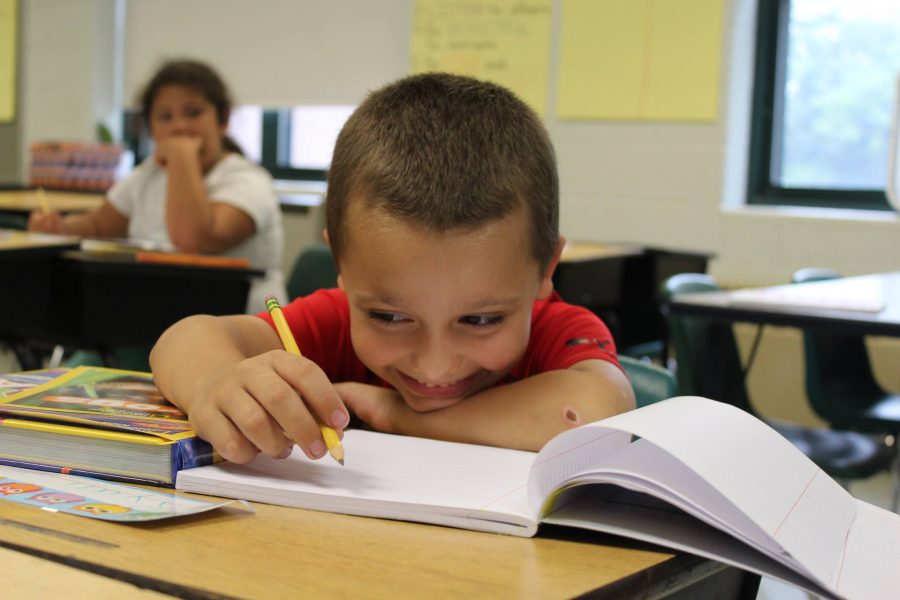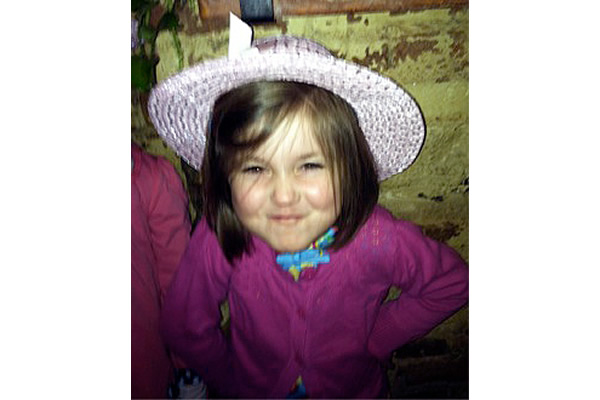
Successful writers understand the difference between strong and weak writing, and use that knowledge to create stronger drafts. In addition, successful writers revise and edit their own writing because they can read it critically, and know how to make it better. Writing follows a process that involves planning, generating ideas, setting goals, and organizing. Furthermore, writing also involves reviewing, evaluating, and revising.
Writing specialists also want parents to know that practice is vital. Writers who spend 15 to 20 minutes a day engaged in writing activities are more likely to become successful writers than those who do not write every day. Try to set aside the same time every day. Consider linking to the daily read-aloud or independent reading time, and then completing after the reading time. Start with as little as 10 to 15 minutes a day, and then increase to 15 to 20 minutes or more a day as appropriate.
What a successful writer does before any other writing takes place can make the biggest difference in the final piece. Parents can help here. Simply discuss and clarify topics with your child. Be sure to consider purpose, audience, and form. Some of those purposes could be to inform, persuade, or describe. Some of those audiences could be other students, teachers, friends, strangers, relatives, public officials, or business firms. Some of those forms could include letters, essays, or stories.
It should also be noted that writing for younger children, such as preschoolers, could include drawing pictures. Determine a topic and illustrate something related to that topic. For older children, illustrate that topic, and then add a caption. For still older children, illustrate that topic, then add a caption, and then use that illustration and caption to stimulate further writing and ideas.
Informal writing often leads to more formal writing. Encourage more time with pen/pencil in hand or fingers on the keyboards. Do some quick writes. Choose a topic and write whatever comes to mind. If the topic and writing resonates well, then continue writing and exploring. If it does not resonate well or spark a discussion, then repeat with a different topic.
What to write about? Donald Graves, as well as other well respected educational researchers and professional authors, repeat this statement: Children write best when they write about something they know about. Write something based upon personal experiences, or try to make a connection from writing assignments to personal experiences. Take family field trips, talk about what you see, and write about your conversations.
To become truly successful, children and teens need to be given opportunities to create their own topics. Children who are fed topics, story starters, lead sentences, or even opening paragraphs, often panic when topics eventually must come from within. This doesn’t mean all topics must be original. Try to alternate writing activities from one day using a prompt, to the next day creating a self-generated topic.
Identifying writing topics is very challenging and takes practice. Writing often begins with questions, so keep a running list of questions. Think small. For example: What is on your mind today? What are 2 or 3 questions you have right now? Go further and choose a topic and expand. Write 2 or 3 more sentences and then keep going. Write 3 or 5 potential leads, choose the best lead, and expand to something more.
What to do next when a child has a topic? Whether that topic was self-generated or otherwise presented, start with prewriting activities. This involves writing, thinking, talking, and gathering information. It does not involve starting with the first sentence and immediately going to the second sentence. Not yet. The more work and effort put into prewriting, the better the final outcome and the easier the overall writing will become.
Talk through the task first. Decide upon a topic to write about, narrow or expand the topic, and create a plan. Consider who will read or listen to the written work. Brainstorm ideas about the subject. List places where to research information and complete the research. Make an outline or start writing notes. There’s no need for complete sentences or paragraphs at this point. The goal is to define an idea and get it started.
The simplest of all outlines is the two-column outline. Separate a page of paper with a large T. Simply put a main idea on the left side of the stem line, and a corresponding detail or set of details on the right side of the stem line. For example, a problem can be listed on the left side, and the solution can be listed on the right side. Additional examples include cause and effect, reasons for/reasons against, opinion/proof, quote from text/explanation of importance, informational notes/personal interpretations, advantages/disadvantages, and facts/feelings.
The drafting stage of the writing process follows the prewriting work. It takes the brainstorming, ideas, outlines, and other work to the next level, and the writing begins to take form. Sentences and paragraphs are created, and different leads may be experimented with.
What children need to know the most about this stage is that it is not a final draft or final piece of work. The term “rough draft,” or “first draft,” refers to progression, changing directions, and ideas taking shape. Writers need to know that they can change direction, cross out words or sentences, and draw arrows to link details that are out of sequence. Those writers who repeatedly rework their first drafts, or who repeatedly write additional drafts, tend to create better final products.
In the drafting stage, writers need to be more concerned with content and not with mechanics, so focus on content here. This includes forming a piece of writing that has a proper beginning, middle, and end, as well as fully developed main ideas and supporting details. It’s all ideas here and getting the best ideas down on paper. Perfection in mechanics and spelling takes time, and that comes later.
How to get started with drafting? Create a topic sentence. Is this a school assignment? Study the question, and then turn the question around to create that topic sentence. Add some details through powerful sentences to create an introductory paragraph. Write two or three different introductory paragraphs and choose the best one. Expand upon the main idea. What’s most important when writing something substantial is to support all main ideas. Most of the time, the more details included in the writing, the better the writing. To help expand, use phrases like: “The author states that…”, “This is important because…”, or “For example…”
For research papers, drafting includes putting the researched information into the writer’s own words. Write sentences and paragraphs, even if they are not perfect at this point. Read what has been written and judge if it means what it is supposed to mean. Show these written words to others for suggestions. Accept and consider those suggestions. Use those suggestions to expand or delete.
Work next on organization. All writing should have a great opening that hooks the readers. The writing should then be easy to follow. Transitions should link original ideas to other ideas. Build on the good parts, add new and original twists to the work, and expand as needed. A powerful ending ties the writing together.
Each writer has an individual voice. Oftentimes it sounds like the writer talking. Show some enthusiasm and some energy as well as confidence. Try to move the reader to the point of wanting to respond. To work on voice, write some letters. When children write to someone, they tend to put their personal voice into their writing.
The reader should also be able to picture the topic, so use powerful words, as well as words that are favorites. Powerful words are the words that solicit strong feelings. The reader should be able to say “Wow! This is the best way to say it!”
All good writing should be easy to read out loud, so work on fluency and smoothness. One practice for a successful writer is to read his own writing out loud. If it is smooth and fluent, then the writing is fine. If there are parts that are hard to read, where the reader is fumbling, then those parts need to be fixed. Move words around. Try to simplify the writing. Experiment with different sentence beginnings. Also experiment with sentence structure, with some sentences being long and other sentences being short.
When successful writers revise, their topics and ideas come into focus. Add and subtract words, phrases, or paragraphs. What to revise often becomes clearer to writers if they have had some time away from their drafts. Putting a draft away, out of sight and out of mind, for a few days or even more, may help a writer to recognize areas that need to be reworked. A writer might even ask, “Did I really write this?” The efforts made at revision will easily separate strong writing from weak writing.
Here is a big, big caution. Do not confuse revision with editing. Revising is that part of the writing process that truly allows the writer to “see again” or “re-vison” what she has written. It involves expanding and/or clarifying ideas, discovering new connections, deleting trivial or irrelevant information, reordering sections, condensing, ending things in new way, gaining a clearer sense of audience, changing voice, and more.
The revising stage is the perfect stage for meaningful feedback from parents. This is where you can review the work objectively, and then make suggestions as to what parts of the writing are difficult to understand, where additional information may need to go, and the parts you like best. Some writers take suggestions as negative, whereas adding some parts you like best shows that some of the suggestions can be positive. This encourages a child to keep writing, and shows examples of good writing that should be repeated.
Continue revising by soliciting additional feedback. Think about what others have said about the writing. Rearrange words and sentences. Take out or add parts. Replace overused or unclear words. Use new, exciting, and more specific words. Revision drafts may need to be multiple drafts. Remind your child that writing is a process, and parts of that process may need to be repeated. Look for sentence fluency. Start sentences with different words, add details to sentences, and combine short sentences.
Trying to correct everything at the same time is too much and too confusing, so work on one particular part at a time. Breaking revision into parts will help. Go through the text and work on a strong lead, and then go through to work on main ideas and supporting details, and then go through and work on sentence variety or word choice. As an alternative, go through the text paragraph-by-paragraph or section-by-section. Different writers work in different ways. Find what works best for your child.
For feedback, as the parent and as the reader, there will be some times when everything that needs to be addressed will need to be addressed, but there will be other times when just two or three comments will be more appropriate and most helpful. So, work on meaningful feedback that addresses content. Those helpful comments on content include: “As a reader, I’d like to know more about this part,” or “Can you add an example here?” or “This part is confusing to me.” Remember to stay positive, and to add positive comments, too (see some suggestions below).
The proofreading stage is all about making a piece of writing easier for readers to read. This is where successful writers fine-tune their work by focusing on correct punctuation, capitalization, spelling, grammar, usage, word usage, complete sentences, proper paragraphs, and appropriate format.
Want to make this simple? Just help your child to create a piece of writing that “sounds right.” Encourage your child to read his writing out loud and to listen to make sure it sounds right. Be sure to read slowly and carefully. Listen for the parts of the reading that bring some stumbling. This is an area that may need some re-working. Yes, it’s extra work, but it’s extra work that will make huge differences in overall quality.
Some children see the publishing piece as the most exciting part of the writing process. For written work that is being taken to the publishing stage, the hard work is now complete, and it’s time for polishing and presenting. It’s also time to consider the audience for the written work, and time to consider how the audience may want to view the work. The overall design and presentation should make the reading easy to read, as well as pleasant to read. Whether the work is to be published in a book form, or whether the work is to be published only on paper, or in PowerPoint or Prezi or another electronic format, it needs to be perfect or near perfect. The final product needs to look edited, clean, and polished. Readers should be able to read, access, decipher, follow, and comprehend. There should be no distracting errors.
For younger children, the published work could be neatly handwritten and include some sort of binding and a colored cover. That binding could be staples, metal rings, some sort of folder, or some other sort of manufactured binding. For older children, the published work could be computer-generated and printed, and include one of the similar bindings. One caution is not to go overboard and do too much. What may be pleasing to a writer, might be too overwhelming for the readers. There should not be distracting varieties or sizes of fonts, unnecessary information, or hard-to-read graphics. All graphics used on the cover, as well as in the written text, should be used to enhance the text.
It is now time to sit back, look at the final created work, and take pride in accomplishments. Be sure to share the writing with others. Offer praise for completed work. Children who become successful writers need to feel the pride that comes with a job well done. It will lead to more and more writing.
Writing Is a Process
Pre-Writing
Drafting
Revising
Editing
Publishing
Possible Positive Comments
- I can tell you care about your topic.
- Great focus.
- You included a lot of details in your writing.
- Intriguing lead!
- Your conclusion left me something to think about.
- Well-organized.
- Incredible voice. I could hear your voice here_____
- You used some interesting words. I particularly like this word____
- I nearly believed I was there!
- Super sentence fluency! All of the sentences flow smoothly.
- All sentences have spark, feeling, and commitment.
- I noticed how no two sentences begin the same way.
- Super use of conventions.
- Beautiful presentation.
- I could really picture____
- I like the way you decided to begin or end your paper
Bruce Johnson is an educator, reading specialist in Merrimack Valley School District in New Hampshire, member of CLiF’s Advisory Board, and author of Helping Your Child Become Successful in School: A Guide for Parents. Learn more at www.guidesforparents.wordpress.com.



